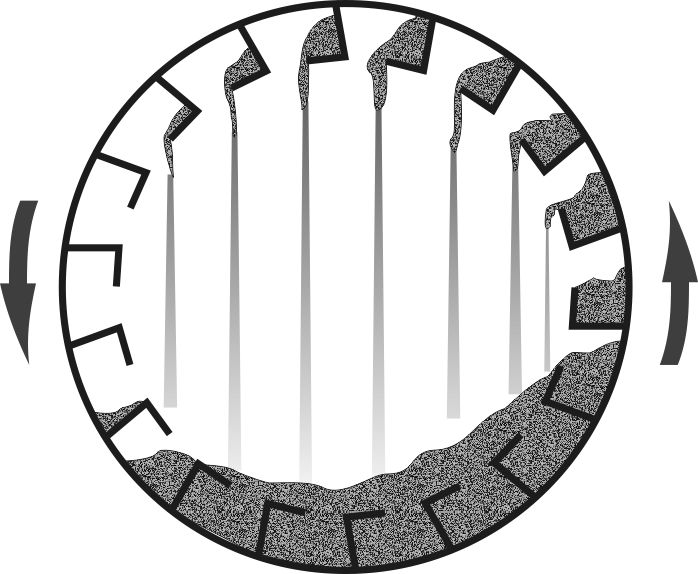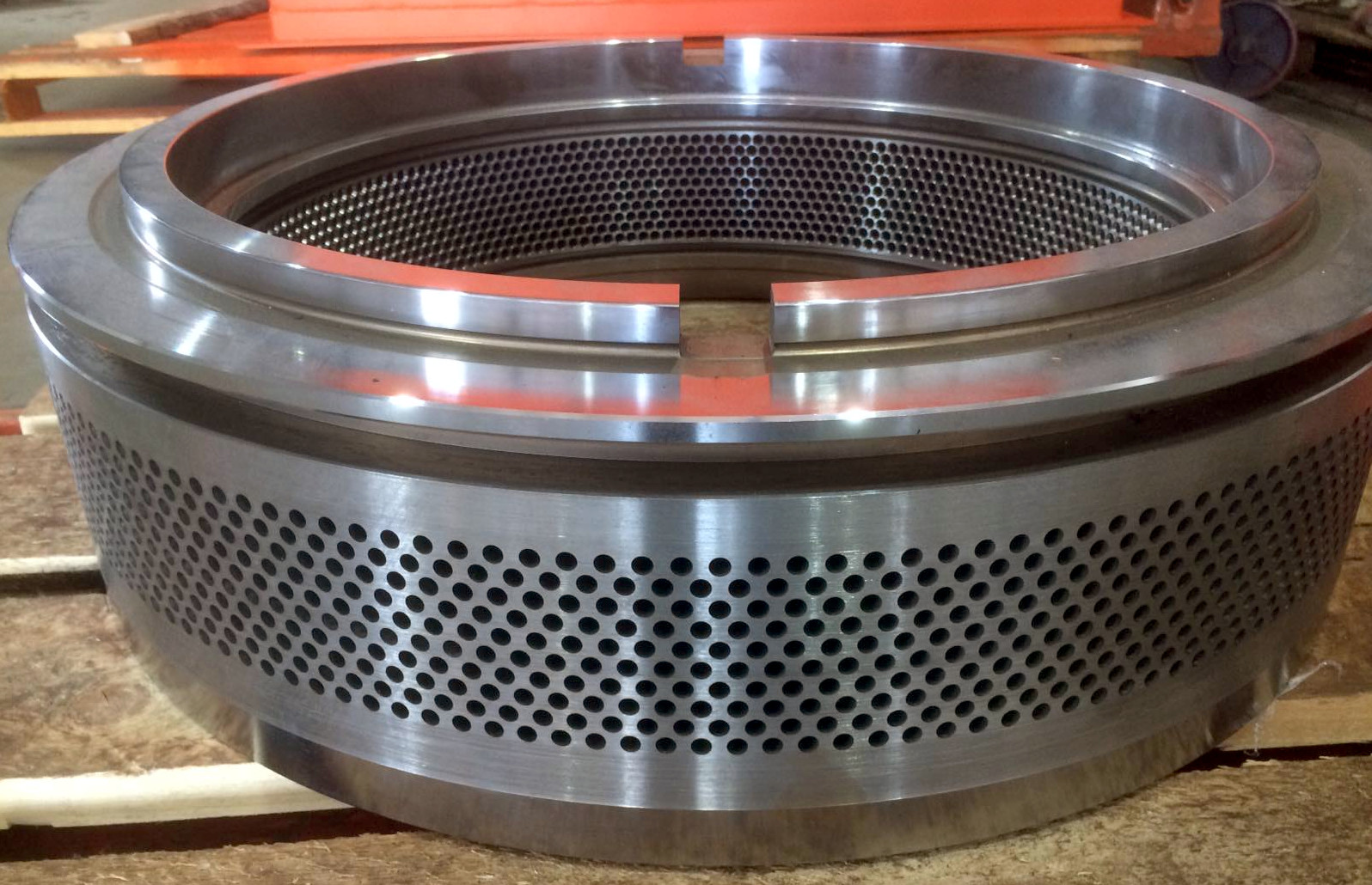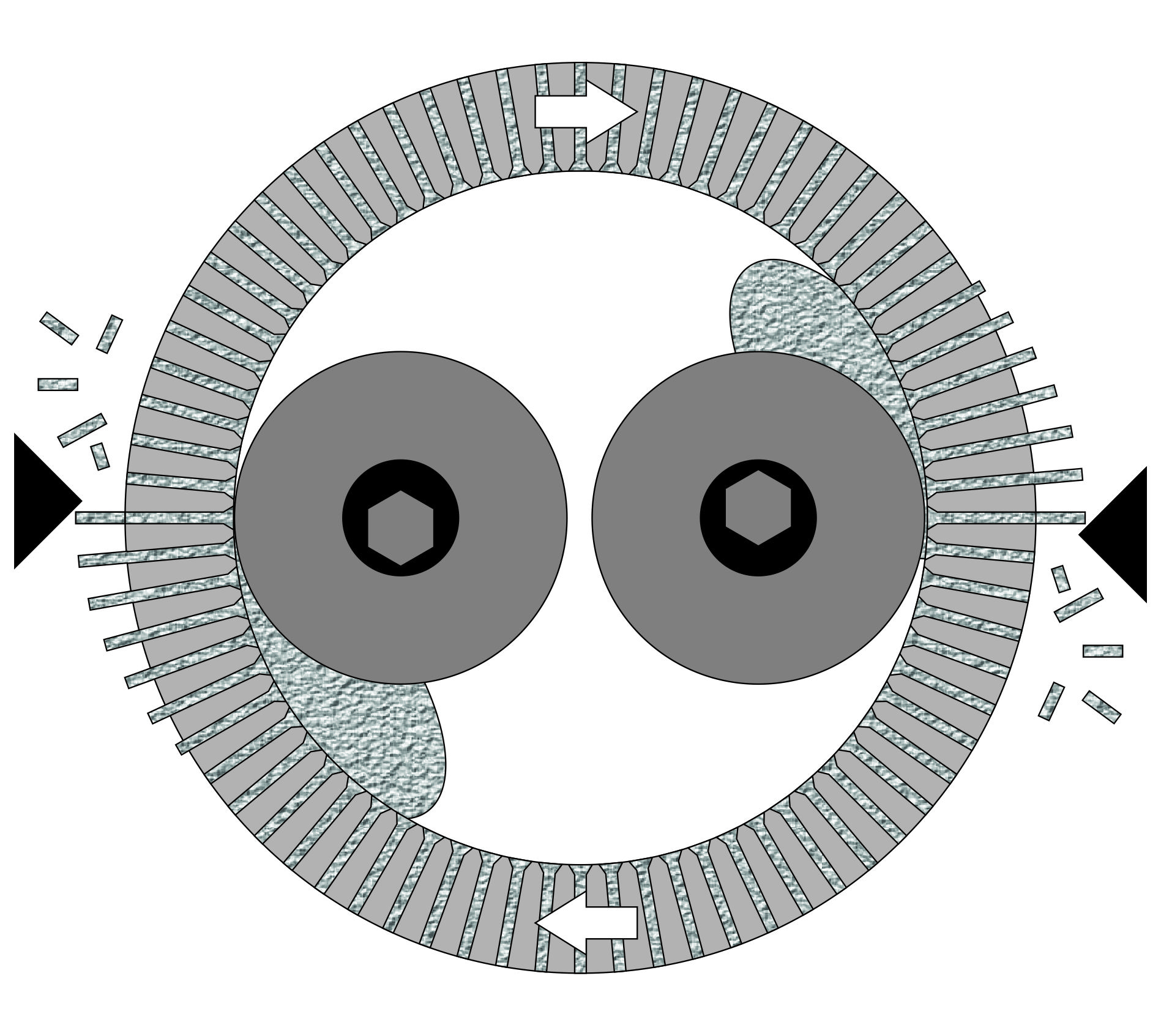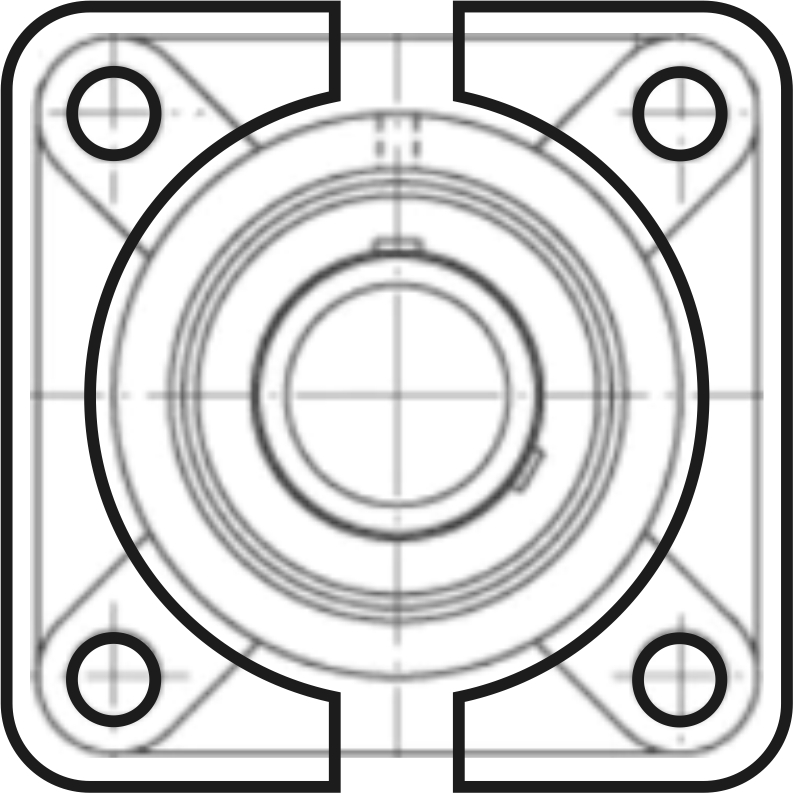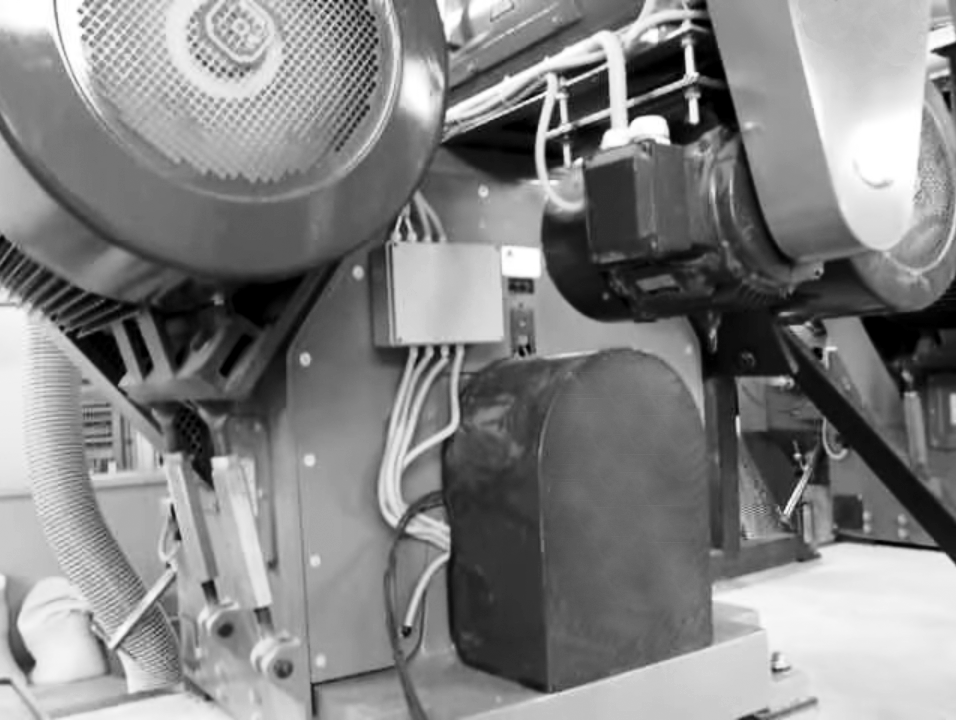The water supply should change proportionally with the amount of raw material fed. In theory, with a rotameter, if the feed increases by 1.5 times, we should supply 1.5 times more water. In practice, this proportion is not maintained. The reason is that a roughly constant amount of energy is spent on "chewing" the material. At minimal feeds, while the die is cold and the load is high, 20-30% moisture is required to prevent overload on the bearings. Thus, a flow of 50 liters per hour (13 gallons per hour) for an initial 300 kg per hour (660 pounds per hour) is not excessive, and the pellet comes out quite dense and long. As the die warms up and the load decreases, the feed rate is increased without changing the water flow, thereby reducing moisture content. When the pellet feels warm to the touch, the feed of sawdust can be 700-800 kg per hour (1540-1760 pounds per hour) for a pellet mill with a die diameter of about 500 mm (20 inches). If mush instead of pellets starts to come out, the water and raw material flow are halved, verifying excess moisture, and then the raw material feed is gradually increased again while maintaining the same water supply. This approach helps avoid accidentally supplying too dry material into a not yet fully warmed-up die. After stabilizing the process at 1.2-1.5 tons per hour (2640-3300 pounds per hour) of wood pellets, which is the cruising speed for pellet mills with a die diameter of about 500 mm and a power of 110 kW, fine-tuning of the moisture content is performed. This is done by adding 1-2 Hz on the frequency converter of the raw material feeder to eliminate puffing of the pellets and cracks on their surfaces. The fewer the cracks and the higher the load on the pellet mill’s main drive, the smaller the steps in adding sawdust feed, and the longer the interval between adjustments to allow the die temperature to stabilize. If during die warming the feed addition interval is 30-40 seconds with 3-5 Hertz increments, at normal operation and high-quality settings, increases of 1 Hertz with a 2-3 minute interval are made.
If the load suddenly increases, the ammeter needle fluctuates feverishly, and the pellets appear as small tablets only 5-7 mm (0.2-0.3 inches) long, it means the die has reached a temperature of 100°C (212°F). There's a lack of moisture, and the friction has sharply increased. In such cases, reduce the feed rate by 30-50% and open the water flow more. When the pellets become long again with cracks, and the load falls, resume the adjustment process but with smaller steps and longer intervals. The moment of die overheating can be quite emotional for the operator because noise appears, and the engine's howl becomes audible. The simplest and first action is to reduce or halt the raw material feed and check if water is flowing. If several attempts to push through are unsuccessful, the die should be cleaned with a special mixture of raw material and oil, as will be described later.
In general, adjustments are always made from wet material to dry. If the die overheats, a slight reduction in raw material feed might not be effective. An overheated die becomes clogged, and due to the additional load, the need for water increases sharply. Too slow reduction of overdried material feed or adding water without significantly reducing sawdust feed will likely lead to overload and an emergency press shutdown. To avoid such situations, one should not fear poor quality pellets during adjustment, especially with inexperienced staff. Over time, the operator learns to react quickly enough, and during the warming of the pellet mill, no more than 200-300 kg (440-660 pounds) of defective pellets will result. Additionally, one should not be overly critical of the product's appearance immediately upon exiting the pellet mill. An allowable content of non-pelletized material is up to 10%, but usually, it's only 2-3%. This small part is visually very noticeable, so a subjective negative quality assessment at first glance is often unfounded.





